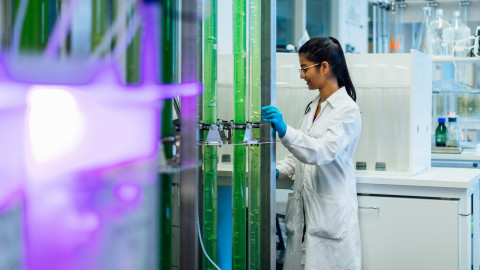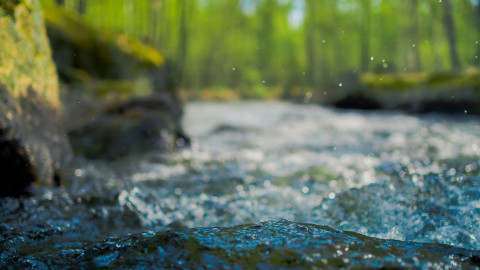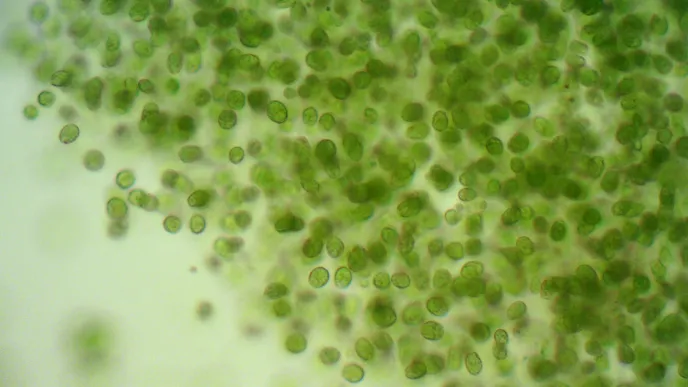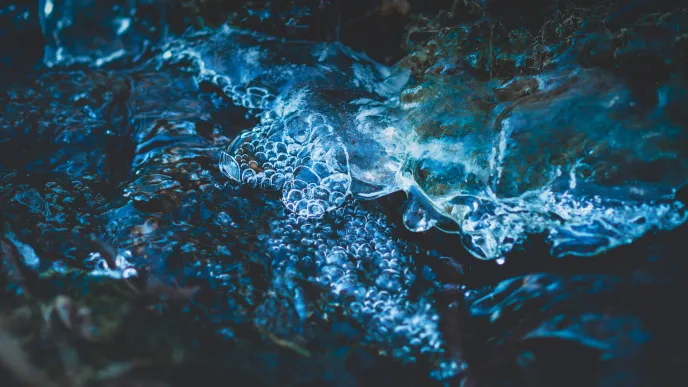Billions of people around the world are struggling to get drinking water. Many factors, including politics, cause water scarcity. By causing too much rain in some areas and not enough in others, climate change is only making it worse. As a result, some areas have more floods polluting water supplies, while others have more droughts evaporating them. Rising temperatures can spread harmful diseases in fresh water, and rising sea levels can make fresh water salty.
Solution 1: Treating water with pollutant-eating microorganisms
In line with LUT’s strategy to promote cleaner water and efficient material circulation, environmental biotechnologist Rebecca J. Wicker studies how pollutant-eating microalgae and bacteria can be used to treat wastewater.
Wicker envisions people making bioreactor systems out of plastic bags or bottles that, like an artificial wetland, effectively absorb organic waste. Since the solution is simple, economical, and scalable, virtually anyone can set it up anywhere.
“Besides purifying water, microalgae and bacteria can remove carbon from the atmosphere which causes global warming and to remove nutrient pollution which causes eutrophication in the Baltic Sea,” says Wicker.
Wicker adds: “When you use microorganisms to treat the water, you can harvest the biomass they generate and upgrade it to bioenergy products like biogas, ethanol and biodiesel. My next set of tests will focus on turning wastewater residue into valuable resources in the circular bio-economy chain.”
Moreover, people who use a simple microalgae-based small-scale bioreactor (e.g., a big algae pond) to treat their water can also sell the biomass to biorefineries.
“That is why I want to see a cheap, easy and transferable bio-solution so that we can spread the Nordic bio-economy principle to the rest of the world,” concludes Wicker.
Solution 2: Harnessing sunlight to remove emerging contaminants
Most water and wastewater treatment plants were not made to decompose emerging contaminants like pharmaceuticals. Studies detecting pharmaceutical residues in water bodies worldwide imply that the water supplies of developed nations may be more polluted than some would like to believe.
Advancing LUT’s ambition to prevent the release of chemicals into the environment, Dr. Kinga Skalska, specialising in process and environmental engineering, works on optimising advanced oxidation processes (AOPs), like ozonation, photocatalysis and non-thermal plasma to eliminate pharmaceuticals and other emerging pollutants from wastewater. AOPs are various chemical processes that unleash hydroxyl radicals to decompose pollutants in water.

In one of the projects Skalska seeks alternatives to photocatalytic oxidation process involving titanium dioxide that requires high energy UV light.
“We are working on the generation of graphene quantum dots with photocatalytic activity under visible light,” says Skalska.
Visible light-based AOPs could be powered by sunlight, and through lowered energy consumption lessen climate change.
The research of Wicker, Skalska and their colleagues shows the promise of LUT’s multidisciplinary commitment to find new, sustainable water purification solutions and address environmental challenges such as climate change.
Water scarcity facts
- 29% of the world’s population lack access to adequate facilities for handwashing.
- 26% lack access to safe drinking water.
- 46% lack access to safe sanitation.
Source: OurWorldInData.org

More information:






